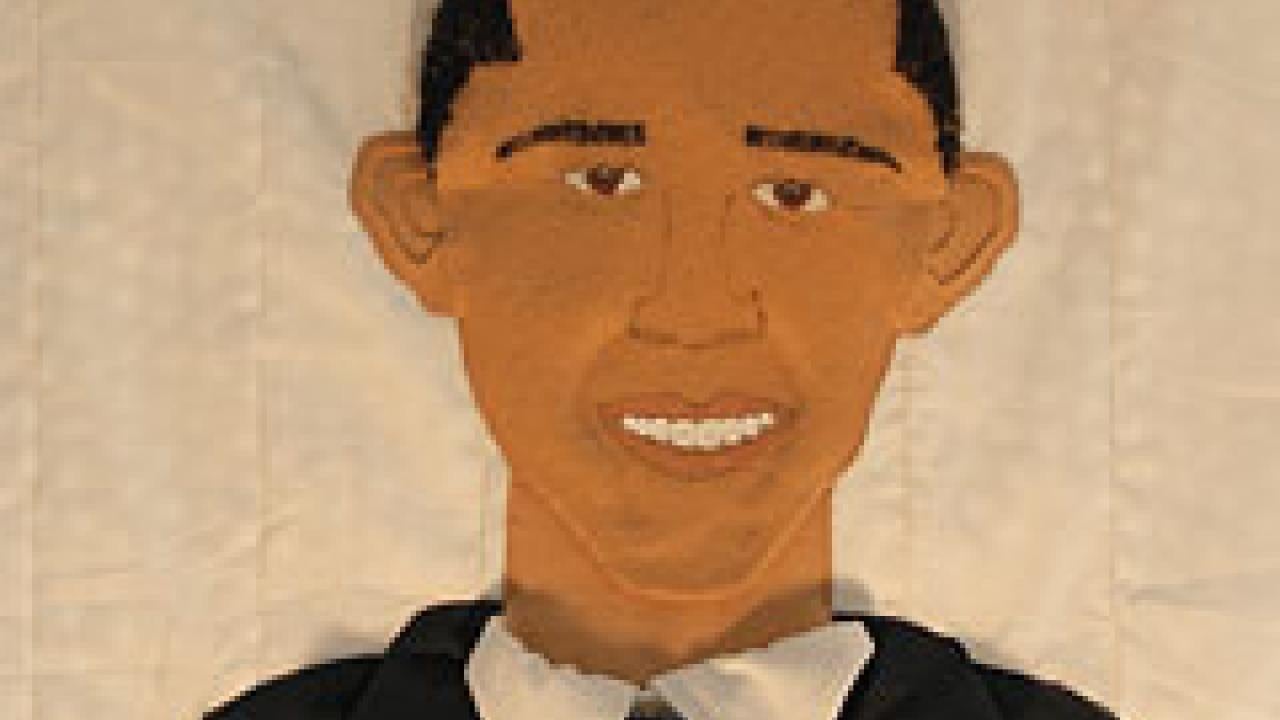When her first son was shot to death, Ora Poston Knowell poured her grief into a quilt. Every April 15, she hangs it in his honor from the front porch of her Oakland, Calif., home. On May 5, she displays the quilt she stitched in memory of his brother, killed seven years later.
The grieving mother is among nine black quilters profiled in a new book, "Crafted Lives: Stories and Studies of African American Quilters," by Patricia Turner, professor of African American and African studies at the University of California, Davis. Published by the University Press of Mississippi, it is in bookstores now.
"Quilts and quilters," Turner says, "can be used to tell the most important stories about African American history and culture."
Booker T. Washington once demeaned the fabric-scrap bedcovers as trivial emblems of poverty and slavery. But in the century since, African American quilts have become widely appreciated as a form of folk art and cultural expression.
Barack Obama's election occasioned the creation of hundreds of quilts; 60 are on display through July 26 at the Historical Society of Washington, D.C. An Obama quilt was also exhibited at the U.S. ambassador's residence in Paris during the week leading up to the inauguration.
"The voices of African Americans, against the thematic background of cultural struggle, resonate in these works of the heart and hand," says Turner, who argues that quilts deserve a place alongside folktales, blues and spirituals.
In two decades of research for "Crafted Lives," Turner viewed dozens of quilt shows and exhibits, read slave stories and other historical documents, and interviewed quilters from all walks of life.
She writes that George Washington Carver quilted, as did Rosa Parks. As a child, Martin Luther King Jr. slept under black-made quilts.
Turner explores tales that abolitionists used quilts to signal safe havens for runaway slaves, and embedded maps into quilt designs. In doing so, she sheds light on the motives of those who have defended and debunked the stories.
She also discusses controversies surrounding the quilters of Gee's Bend in rural Wilcox County, Ala., whose work has attracted the attention of former first lady Laura Bush, Martha Stewart and Oprah Winfrey.
But the stories of individual quilters anchor Turner's book:
- Elliott Chambers, who told Turner that in quilting, as in life, you "can take what you've been handed … and convert it into something functional, something pleasurable." Born in 1933 in Mobile, Ala., to a family of 10 children, Chambers made his way to Sacramento where he earned a Ph.D. and established a career as an educator and college administrator.
- Marion Coleman, born in rural Texas in 1946, became a social worker in Northern California. Now retired, Coleman uses quilts to tell stories about her past. She also created a quilt in honor of Obama; it is on display in the ongoing exhibit of Obama quilts at the Historical Society of Washington, D.C.
- Riché Richardson, born in 1971 to a middle-class family in Montgomery, Ala., made the Obama quilt that was exhibited in Paris before the inauguration. Richardson, now an associate professor of Africana studies at Cornell University, was a member of the UC Davis faculty as Turner was writing "Crafted Lives."
Other quilters in the book hail from Alaska, Arkansas, Louisiana, Nebraska and Rhode Island.
"In listening to these quilters talk about the quilts they make, about why and how they make them, I believe the breadth of the African American experience can be better understood," Turner says.
Turner's earlier books include "Ceramic Uncles and Celluloid Mammies: Black Images and Their Influence on Color" and "I Heard It Through the Grapevine: Rumor in African-American Culture." She is co-author of "Whispers on the Color Line: Rumor and Race in America." For her next book, she will examine the lore — and quilts — generated in response to Hurricane Katrina, its aftermath, and Obama's candidacy, election and inauguration.
About UC Davis
For 100 years, UC Davis has engaged in teaching, research and public service that matter to California and transform the world. Located close to the state capital, UC Davis has 31,000 students, an annual research budget that exceeds $500 million, a comprehensive health system and 13 specialized research centers. The university offers interdisciplinary graduate study and more than 100 undergraduate majors in four colleges — Agricultural and Environmental Sciences, Biological Sciences, Engineering, and Letters and Science — and advanced degrees from five professional schools: Education, Law, Management, Medicine, and Veterinary Medicine. The UC Davis School of Medicine and UC Davis Medical Center are located on the Sacramento campus near downtown.
Media Resources
Claudia Morain, (530) 752-9841, cmmorain@ucdavis.edu
Patricia Turner, African American and African Studies, (530) 752-6068, paturner@ucdavis.edu
